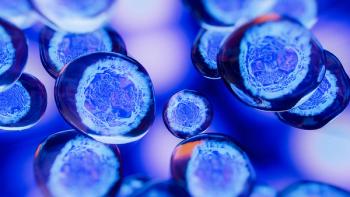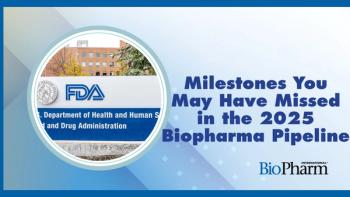
- BioPharm International-08-01-2017
- Volume 30
- Issue 8
Keeping it Clean: Biopharmaceutical Cleaning Validation
Industry experts weigh in on best practices, challenges, and mutual recognition of cleaning validation standards.
FDA and the European Medicines Agency (EMA) will begin recognizing each other’s cGMP inspections as early as November 2017, the agencies revealed in March 2017 (1). Since the announcement, there has been some discussion about how this will impact the standardization of cGMP procedures for bio/pharmaceuticals (2). Cleaning validation is an important part of GMPs, and experts have mixed opinions on whether this will affect existing standards. While there are some known differences on how cleaning limits are calculated between the United States and Europe (3), biopharmaceutical manufactures around the world face similar challenges when it comes to cleaning validation.
To discuss some of these challenges, BioPharm International posed some questions to Karen Ginsbury, CEO, PCI Pharmaceutical Consulting Israel Ltd; Richard Forsyth, principal consultant with Forsyth Pharmaceutical Consulting; Richard Yeaton, president, Atlantic Technical and Validation; and George Verghese, director, Technical Service at STERIS Corporation.
Common challenges
BioPharm: What are some common challenges you see biopharma manufacturers facing when it comes to cleaning validation processes?
Ginsbury (PCI): The challenges for cleaning validation in biopharma processes are somewhat different from traditional validation of small-molecule chemical residues. In biopharma, the main issue is microbiological contamination, in particular viral residues, and almost all of those can be overcome by using sodium hydroxide in the cleaning process. Therefore, the challenges that remain are:
- Reproducibility of manual cleaning of small parts and non-clean-in-place (CIP) systems.
- Effective design of fully automated CIP systems to avoid dead legs and lack of drainability.
- Build-up of physical protein residue on the walls of equipment cleaned by CIP. This process happens over time, and if there is no periodic manual scrub down, this can result in a thin layer over the inner surface of a vessel, which can be scraped off with your fingernail.
- Failure of CIP systems over time due to blocked steam traps, poor maintenance practices, or even replacement of a steam trap with a new one installed upside down.
I’ve been on the job for 30 years and seen some weird things. A word of caution-because using sodium hydroxide denatures the protein and therefore inactivates the pharmacological residue, you do not need to calculate a health-based exposure limit as required for small molecules in EMA’s 2014 guidance (4). In fact, the guide has a specific exclusion clause in section 5.3.
‘Therapeutic macromolecules and peptides are known to degrade and denature when exposed to pH extremes and/or heat, and may become pharmacologically inactive. The cleaning of biopharmaceutical manufacturing equipment is typically performed under conditions which expose equipment surfaces to pH extremes and/or heat, which would lead to the degradation and inactivation of protein-based products. In view of this, the determination of health-based exposure limits using PDE limits of the active and intact product may not be required. Where other potential routes of cross-contamination exist, the risks posed should be considered on a case-by-case basis’ (4).
Therefore, provided that you can demonstrate that you have degraded and denatured the protein to a pharmacologically inactive substance, there would be no need to calculate a PDE.
You still have to be sure that you remove the denatured protein residue and restore pH to neutral before the next cycle of manufacture but you do not need to calculate permitted daily exposures (PDE). I was recently in an inspection where neither my client nor the inspector was familiar with the clause. A polite intervention on my part saved the client from spending a lot of unnecessary resources on trying to calculate a PDE for a biopharma product.
Verghese (STERIS): Some of the common challenges faced in biopharma include:
- Developing acceptance criteria and validation strategies incorporating degradation or deactivation of proteins and their breakdown products
- Transitioning from traditional approaches to health based limits when applicable
- Harmonizing cleaning process risk-assessment methodologies, considering their implementation requirements and cost
- Addressing air-liquid interface issues in bioreactors from a cleaning and validation perspective; ensuring a high-level of cleanliness to prevent potential for microbial excursions and biofilms; and determining the impact of rouge formation on surface cleanliness, acceptance criteria, and validation
Yeaton (Atlantic Validation): Keep things clean. Once you clean a vessel, FDA is going to expect you to have some data that says you can hold that vessel clean, and have it still be usable for some period of time--you have to have data to support that claim. So usually a client will pick a time period that they want to hold, and they’ve got to hold the clean tank one day beyond that, and then do some sort of bioburden analysis to show that tank is still meeting criteria. It’s surprising how short that time can be sometimes, especially if you’ve got a large vessel, where you can’t quite get it as dry as you would like. If you’ve got any residual moisture that will eventually start growing bioburden, you’ll find that you’re failing your bioburden requirement. That tells you just how long you can hold that tank. You can dry a vessel out by blowing clean compressed through it. Dry nitrogen is more expensive but more effective.
I’ve also noticed a lot of biopharma manufacturers want to establish a ‘dirty hold time.’ This means you don’t have to clean your tank immediately after it’s used to produce. You can wait some period of time and then clean it. I understand why production managers say they want that flexibility, a lot of times they’ll say they want to be able to hold a dirty tank over a three-day weekend and still be able to clean it effectively when people come back from the weekend. But I have found that getting your operations people to let you have that tank, three times for the three-day period plus the one day safety margin can be challenging. I’ve had operations managers say there’s no way I can give you my tank for that long, I need it too much. And then we have to do a little bit of negotiation, and say if you need it that much, why do you want to be able to hold it over a three-day weekend? And then we have a little heart-to-heart about what’s realistic. However, once you let organic materials dry on a stainless-steel surface, you’ve made that cleaning challenge much more difficult.
Dry proteins are very tenacious to wash off. Especially if you can’t have any mechanical scrubbing or mechanical moving of soil. I’ve convinced a number of my clients to proceduralize in their production batch records that once production is done, it’s followed by a 5- or 10-minute high-purity water flush, just to get the majority of your stuff off the surface of the stainless steel. You’re not going to get it all, but it’ll get a good 80% of your materials off your vessel until you start your official dirty hold time start. Now the downside to that is, if you do that, now you’re committed to do that every time. Even if you’re going to be cleaning your tank immediately after use you still have to do that 10-minute high purity water flush. The way I look at it, 10 minutes is okay if that will reduce your CIP cycle from eight hours down to two hours.
Forsyth (Forsyth Pharmaceutical Consulting): Some challenges include:
- Calculating cleaning limits based on PDE/accepted daily exposures (ADE)
- Ability to denature/degrade products as part of the cleaning process and how to apply that to the cleaning limits
- Well-controlled cleaning procedures.
Best practices for process consistency
BioPharm: What are some best practices to ensure cleaning process consistency for biologic drugs?
Forsyth (Forsyth Pharmaceutical Consulting): Make sure all cleaning procedures have sufficient detail and training to ensure consistent execution and periodic monitoring of cleaning execution. It is also important to assure personnel are following the cleaning procedures.
Yeaton (Atlantic Validation): I recommend that my clients use both a caustic and acid cleaning agent. The accepted conventional wisdom that is your caustic cleaning agent goes after your protein, and your acid cleaning agent goes after more polar things, salts. You usually don’t have that kind of a cleaning challenge for salts; they’re usually very water soluble. The reason why I like to use both caustic and acid cleaning agents is when you go with your caustic wash followed by some sort of intermediate rinse, then you do an acid flush, you’re bouncing your pHs around so much you’re effectively driving your bioburden down to a very low level. There are microbes that don’t like low pHs but they like high pHs, or vice versa, I’m not a micro person but I’m not aware of any microbes that can handle both ranges of pH.
Ginsbury (PCI): A well-designed, validated, and well-maintained CIP system is really the only way to ensure a reproducible cleaning process. I advise the use of disposables wherever possible, and today there are single-use systems available which can negate the need for cleaning at all. I have seen companies implement a serious risk-based approach to turning a facility from dedicated usage to multi-product using single-use systems so that no product contact parts are multi-use.
If using manual cleaning, you need to have a much more robust cleaning process to allow for variability in application of the cleaning between different operators on different days. Personally, I am not convinced that you can have a reproducible manual process because there is always the possibility that an operator will fail to clean an item at all, or skip over a step in the process, use less water or cleaning agent etc., and it is difficult to control.
Verghese (STERIS): Best practices include designing and qualifying an effective and robust cleaning process based on risk assessment, understanding the relationship between cleaning process parameters and quality attributes, reducing process variability/spread to help achieve optimization, maintaining continued process verification, and establishing appropriate change control procedures to address changes in both the manufacturing and cleaning process.
Technology advances
BioPharm: Are there any new technological advancements available to improve cleaning validation processes for biologics? What kinds of improvements can be made in the future?
Verghese (STERIS): Improvements in the future include advanced inline and online analytical methods for quick and direct surface residue detection and quantification.
Ginsbury (PCI): I think the design of CIP systems are constantly improving. There is continuous monitoring of critical process parameters in CIP: temperature, contact time, water pressure, cleaning agent concentration etc., which ensure the cycle was completed as planned. I am not aware of major breakthroughs in new technologies in this area, and I suspect that we will see increasing use of disposables/single-use systems and reduction in cleaning, which is ecologically sound because of the amounts of water and environmentally unfriendly cleaning agents. Of course, you can counter that the single-use systems are not good for the environment either, but overall my impression is that they are the lesser evil.
Yeaton (Atlantic Validation): Well there are some technologies that are still pretty new. There are some technologies getting close to being able to complete real-time endotoxin tests and bioburden tests that use fluorescents with DNA to take bioburden, things like that. I don’t know if they’re 100% ready for prime time yet, but they’re getting close. I think anything that can be done to minimize the wait time for either doing bioburden testing or endotoxin testing, is worth it. The closer you can get to a real-time release of a clean vessel and say I have data that I can show to an inspector that shows that I’m confident my vessel is clean--instead of waiting a week for your incubation to come back to say my bioburden is good, or a couple days for someone to run an endo test back in the lab--the better. The closer you can get to real-time results, or close to near to real-time results, the smoother things go and the more dependable that is at an inspection. Because you can say that if for some reason something upsets my cleaning process, I will know just in time to run an extra cycle instead of having to go back and quarantine whatever was produced with equipment that might not have been clean enough. The closer you get to a real-time release of clean equipment, the happier I think you’re going to be. I think it’s well worth the capital expense to purchase this equipment. Each company is going to have to evaluate that equipment to see if they’re ready for it. It’s evolving, every year I go to these product shows and I see more stuff out there that’s getting more and more robust and rugged. It’s definitely worth investigating. Part of the problem is that most GMP companies don’t want to be the first one to convince the FDA that their new technology works. Most companies want to be the second or third ones.
Mutual recognition of inspections
BioPharm: FDA and EMA recently announced that they would recognize each other’s GMP inspections (1). How might this impact cleaning validation? Is further harmonization still needed in this area?
Forsyth (Forsyth Pharmaceutical Consulting): It will be interesting since they emphasize different things during their audits and might have different opinions as to what is acceptable. It will be potentially troubling for multinational companies who will continue to see both agencies. I would guess things will slowly harmonize over time to some agreeable equilibrium.
Ginsbury (PCI): Well I don’t know that it will impact cleaning validation at all. EMA has issued the guidance mentioned earlier, but FDA does not seem to have adopted it or at least has been quiet as to whether they do or don’t agree with the approach. And as mentioned above, EMA has excluded therapeutic proteins and macromolecules from their approach anyway. I suspect that, as has been the case to-date, cleaning validation in biopharma where multi-use equipment is in place will continue to focus on microbiological risks and validation of viruses … as indeed it should.
Verghese (STERIS): Hopefully it will reduce the number of inspections and result in gained efficiencies for companies as well as the regulatory agencies. Further harmonization in regulations, guidance documents, inspector expectations, and industry practices may be helpful. For example, in the context of setting health based limits, various practices are followed such as the International Society for Pharmaceutical Engineers Risk MaPP approach of using ADE more common in the United States, EMA’s PDE, and the traditional approach. The recent draft Q&A on health-based exposure limits from the EMA is a step in the right direction (5).
Yeaton (Atlantic Validation): I have heard an FDA inspector give a presentation on that [during] a [Parenteral Drug Association] chapter meeting a couple of months ago. They really are looking for a way that they can say, well if the EMA inspected these people, we can trust their results. So yes, they are serious about that. I would say the Europeans, the Americans, and the Japanese are pretty consistent with each other. Now human nature being what it is, yes we have harmonization, but you do get a certain amount of ‘we’re different, we’re better’ on the part of the inspectors. Whether it’s the Americans looking at the Europeans, or the Europeans looking at the Americans, but yeah, they do want to be able to trust each other. The catch is going to be some of the more third-world countries. And this inspector was very frank, that they’re concerned about corruption, they’re concerned about favoritism where some regulatory agent is going to look more favorably on a native company than a foreign company. They have a long way to go before they can really trust some of these other inspection agencies.
I think you’ll see that phased in gradually, where FDA may start saying if I can review the EMA results, we either may not have to go inspect or we may have an abbreviated inspection. The other side of that is EMA may come in and say we’ve looked at the inspection report from FDA and so we want to focus on the same issues FDA had. That cuts both ways. If you had a problem in an inspection with FDA don’t be surprised when EMA asks you about the very same thing, and you better show that you’ve been making progress with that.
References
1. R. Hernandez, “
2. S. Milmo, Pharmaceutical Technology Europe, 29 (4) 10-11 (2017).
3. A. Walsh, “Cleaning Validation for Biologics," BioPharm International eBook, October 2015.
4. EMA, Guideline on Setting Health Based Exposure Limits for Use in Risk Identification in The Manufacture of Different Medicinal Products in Shared Facilities (London, 2014).
5. EMA, Questions and answers on implementation of risk based prevention of cross contamination in production and Guideline on setting health based exposure limits for use in risk identification in the manufacture of different medicinal products in shared facilities (London, 2016).
Article Details
BioPharm International
Volume 30, Number 8
July 2017
Pages: 22–26
Citation
When referring to this article, please cite it as C. Hroncich, “Keeping it Clean: Biopharmaceutical Cleaning Validation," BioPharm International 30 (8) 2017.
Articles in this issue
over 8 years ago
Gottlieb Tackles Opioids, Drug Costs, and Innovationover 8 years ago
CDMOs: New Administration, New Frontierover 8 years ago
Just the Biopharma Facts, Pleaseover 8 years ago
Process Chromatography: Continuous Optimizationover 8 years ago
Optimizing Cell-Culture Mediaover 8 years ago
The Role of Quality Standards for Biomanufacturing Raw Materialsover 8 years ago
Avoiding Investigational Failures and Discrepanciesover 8 years ago
Analytical Strategy in the Development of Biosimilarsover 8 years ago
BioPharm International, August 2017 Issue (PDF)Newsletter
Stay at the forefront of biopharmaceutical innovation—subscribe to BioPharm International for expert insights on drug development, manufacturing, compliance, and more.





